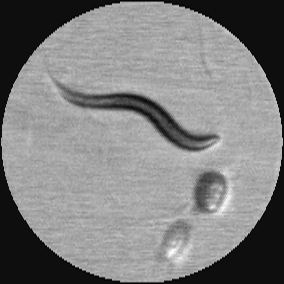The technology developed by researchers from the Technion is based on the innovative concept SPI (Single-pixel imaging) - imaging using a sensor with a single pixel. This concept, which enables photography without a camera, has extensive potential in diverse applications such as the development of components in autonomous vehicle alert systems and improving the ability of microscopes to see deep into biological tissues

Researchers from the Viterbi Faculty of Electrical and Computer Engineering at the Technion developed an innovative technology for rapid imaging and demonstrated its performance in reproducing the movement of a tiny animal. The development published in Nature Communications was led by Prof. Amir Rosenthal, doctoral student Yevgeni Khakmovich and master's student Sagi Monin.
The technology developed by the researchers is based on the innovative SPI (Single-pixel imaging) concept - imaging using a single-pixel sensor. This concept, which enables photography without a camera, has extensive potential in diverse applications such as developing components in autonomous vehicle alert systems and improving the ability of microscopes to see into the depths of biological tissues.
SPI is based on illuminating the object with coded light patterns usually produced by a projector. Based on the characteristics of the light reflected from the object, the image of the object can be produced using reconstruction algorithms. The problem is that so far these systems have been characterized by significant limitations, one of which is Slow shooting speed (Purchasing the photos, in professional words). This rate is due to the fact that the projectors themselves are slow, a fact thathave so far limited them to photographing stationary objects.
The Technion researchers broke through the aforementioned limitation using a new method for spatial coding of light at unprecedented frequencies - 2.4 MHz compared to 22 kHz, which is the maximum frequency in SPI technologies today. it's aboutAn improvement of more than 100 times at the rate of projection and the speed of acquiring the image. Using a rotating device with a light coding mask on it, the researchers created a completely new illumination pattern and an SPI microscope with unprecedented capabilities.
To demonstrate the capabilities of the system, the research group produced videos at a rate of 72 images (frames) per second. The videos accurately show the complex movement of C. elegans worms - something that was not possible with existing SPI technologies.
The Ohlendorf Minerva Center at the Technion provided financial support for the research.

One response
It's a shame that it isn't explained a little more about how this technology works
Eli Isaac is a private computer science teacher
https://eisaak123.wixsite.com/privatelessons